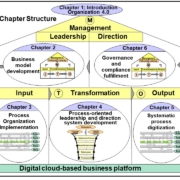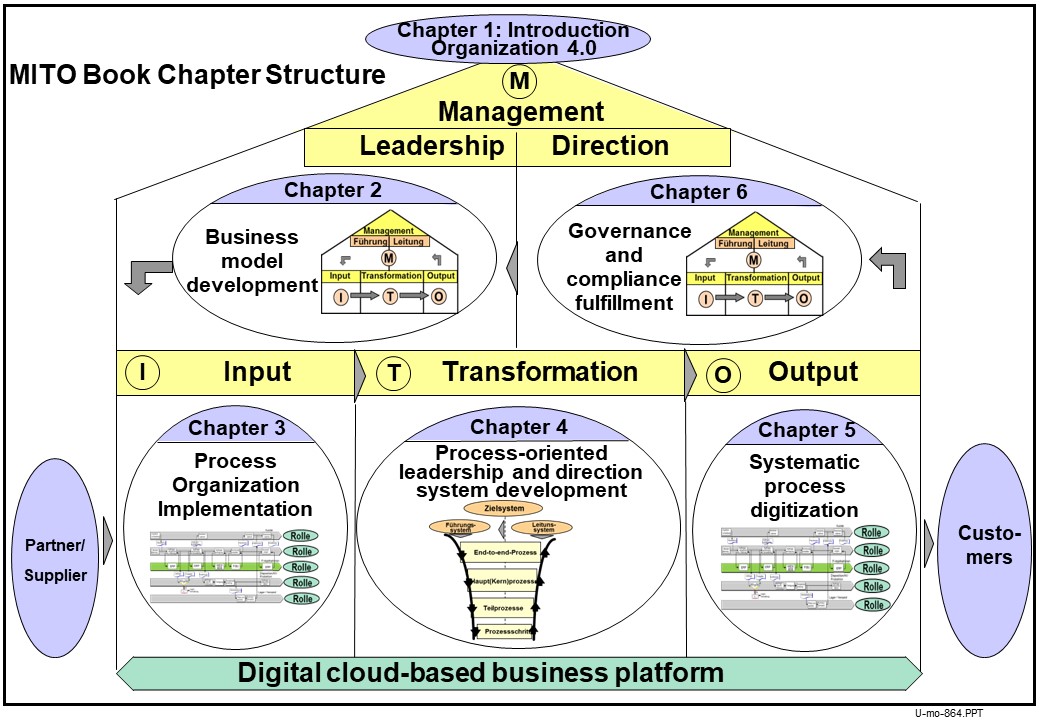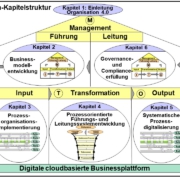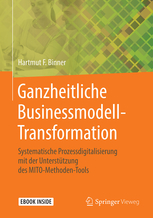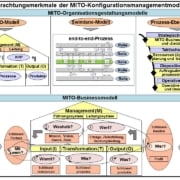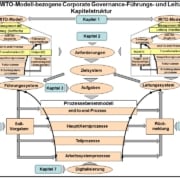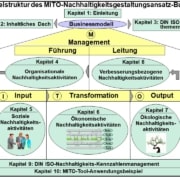New publication:
Current for the Anglo-Saxon market is the book published in September 2020 by Springer Vieweg Verlag:
„Ganzheitliche Businessmodell-Transformation
-Systematische Prozessdigitalisierung mit der Unterstützung des MITO- Methoden-Tools -“
Hardcover + eBook 38,86€, eBook 67.40€, 252 Pages, ISBN 978-3-658-30232-0
under the title:
„Holistic Business Modell Transformation
– Systematic Process Digitization with the Support of the MITO Method Tool –“
Hardcover 85,59€, MyCopy-Softcover 39,99€, 296 Seiten,
ISBN 378-3-658-37366-5
published. In this book, the change management process for implementing a digital business model is described via the holistic Organization 4.0 MITO configuration management. The content chapter structure of this MITO book with the explanation of the different transformation design views is based on the superordinate operational control loop principle within the MITO model segments shown in Figure 1 with „Management, Input, Transformation, Output“.
Figure 1. MITO Book Chapter Structure: Holistic Business Model Transformation
Whereby the management segment (M) is still subdivided on the default side into the process-related management segment and on the feedback side into the factual management segment. The MITO business model based on this supplements the 5 model segments with the downstream customer and upstream supplier segments and integrates the hierarchical process level model from a corporate governance perspective into the MITO model representation for the conception of the process-oriented target, leadership and management system.
With the support of these model structures and the MITO method tool with many practical application examples, a goal-oriented change management process for digital business model transformation is achieved in conjunction with systematic process digitization. This starts from the existing traditional business model and, with the interlinked key topics shown, is intended to ensure sustainable and successful implementation of the future company-specific digital business model under the name Organization 4.0
In accordance with the logical sequence of a goal-oriented change management process, the following task-related chapter contents are involved:
- in Chapter 1: Introduction to the MITO model-related organization 4.0 – configuration management (master plan for process-oriented organization, see ISBN No. 578-3-658-20661-1, 599 pages)
- in Chapter 2: Within the MITO leadership segment, the holistic business model development with the requirement analyses and the strategy and target specifications derived from them for the current actual situation is analyzed in a method-based manner. The systematic answering of the 7 basic W-Questions
„1.) Why?, 2.) Who?, 3.).What?, 4.) How?, 5.) With what?, 6.) With whom?, 7.) Value?“
is the starting point for the change management process to develop a digital business model.
- in Chapter 3: The MITO input segment is about organizational transformation with the method-supported development of a process-oriented regulatory structure (process model). The processes themselves are mapped in the globally valid BPMN 2.0 process visualization standard in the Swimlane representation.
- in Chapter 4: For the order control on the default side and the result measurement on the feedback side in the transformation segment, the indicator-supported development of an integrated process-oriented leadership and management system across all process hierarchy levels in the balanced scorecard structure with the associated employee-oriented value culture claim is explained as a prerequisite for the cultural transformation.
- in Chapter 5: After creating the organizational and cultural prerequisite, the digital transformation takes place in the output segment with process digitization in line with requirements on the basis of a variety of digital business model innovations with the help of a digitization master plan.
- in Chapter 6: Concluding, the evaluation as corporate, risk governance and compliance proof of a successful holistic business model transformation is also carried out in the MITO management segment using methods as an example. Due to identified deviations, the MITO business model control loop starts again from the beginning.
Each individual chapter is supplemented by a large number of practical examples with the associated portfolio checklists, which are systematically worked through using the MITO method tool via analysis, diagnosis, therapy and evaluation.
In August 2022, another MITO book has been published by Springer Vieweg Verlag:
Book reference: Springer Vieweg Verlag
Title: Sustainable MITO Business Model Transformation
Publication date: August 2022, 390 pages, ISBN 978-3658-377279-8
Presents a holistic MITO business model sustainability design approach for integrating all sustainability issues into the organization and business activities, thus assuming social responsibility, Corporate Social Responsibility (CSR) in English, for the impact of the organization’s decisions on society and the environment. In accordance with the standard requirement, a standardized procedure with a systematic approach using the MITO method tool for responsible sustainability-oriented corporate development is ensured. This is based on the specifications of DIN ISO 26000 with the core sustainability topics and recommendations for action mentioned there.
The content book chapter structure with the description of the method-supported fulfillment of the manifold sustainability requirement and recommendations on the basis of MITO practical examples with digital verification, e.g. for a CSR prequalification refers to the MITO business model as a common umbrella for the sustainability focus activities mentioned there within the 7 MITO business model segments.
In preparation is the MITO – Corporate Governance – book, which will also be published by Springer Verlag in spring 2023.
For more information, please visit www.pbaka.de

